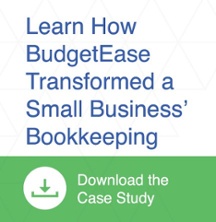 Regularly, we receive requests to have books “investor ready” and we can help you, too. What exactly does investor ready mean? When you're seeking investment in your company, you need to be prepared to answer any and all questions that potential investors might have. You are going to want to share your vision, mission, and strategic plan and you need to present a clean set of financial statements. Here are a few tips on getting your company and financials ready for investors.
Regularly, we receive requests to have books “investor ready” and we can help you, too. What exactly does investor ready mean? When you're seeking investment in your company, you need to be prepared to answer any and all questions that potential investors might have. You are going to want to share your vision, mission, and strategic plan and you need to present a clean set of financial statements. Here are a few tips on getting your company and financials ready for investors.
Your Business Plan
First and foremost, you need a solid business plan. This is what's going to sell your company to investors. Your business plan should lay out all the important details of your business, including your mission statement, target market, competitive analysis, marketing strategy, and financial projections. This is where you'll really have a chance to wow potential investors and get them excited about investing in your company. Make sure you've got all your bases covered and that your business plan is watertight before you start seeking investment.
The Core Three
There are three statements all potential investors want to see. They are:
- The Balance Sheet – Arguably the most important financial statement. The balance sheet lists all business assets, liabilities, and equity ownership. It’s an efficient way to see what a business owns and owes. Nearly every small business we come across overlooks the importance of the balance sheet. As such, it usually contains errors and omissions that could negatively impact an investment opportunity.
- Profit & Loss (Income Statement) – As the name implies, the Profit & Loss Statement shows the profit and loss over the year. It provides information on revenue, gross profit, expenses, costs, taxes paid, and net profit. The P&L should be laid out in a logical way with transactions categorized in the correct place (not in header rows).
- Statement of Cash Flows – This statement details any changes in the cash account. Cash flow is typically categorized as cash flows from operations, investing, and financing. It is a picture of how the company manages money coming in and out of the business. It breaks down where the money goes to see if your business is making more money than it spends.
The Small Stuff Matters
At this point, you may be able to generate the three statements above. But are they accurate? The small stuff matters in all cases but especially when you are presenting financials to potential investors. Take the time to ensure all income and expenses are categorized properly on all statements. Look for:
Inconsistent Transactions
Look for gaps in routine expenses (rent, insurance, etc.). If there is a month without a routine payment, there’s a good chance it is miscategorized. Generating your reports by month will bring to light inconsistencies.
Header Rows
Look for items posted in header rows and move them to the proper subaccount. Having clean header rows will make your financial statements look professional.
Unchanged Balances
Do you have loans or liabilities with the same balance all year? If so, you are probably not posting the payment and interest correctly.
Negative Liabilities
Are there negative balances on your statements? Other than depreciation and the equity section there should not be negative balances.
Catch-All Accounts
There should not be balances in Ask my Accountant, Uncategorized Expenses or Income, Suspense, or Undeposited Funds.
Loans
Get your loan statements and make sure the balances and interest paid on your financial statements agree.
Uncleared Transactions
Old, uncleared items distort your actual financial condition. You can verify by looking at your last bank reconciliation. If you do have uncleared items, they need to be corrected so your books are correct. This can be tricky as often there are transactions from prior years that need to be corrected in a way that does not impact your filed taxes.
Need Help Getting Investor Ready?
As you can see there are a lot of things to do to make sure your financial statements are ready for consideration by investors. BudgetEase has experience getting books clean and preparing financial projections for investors. We would love to help you in this important process. Reach out to us at www.budgetease.biz to find out more, or click below to reach us to schedule an appointment.






